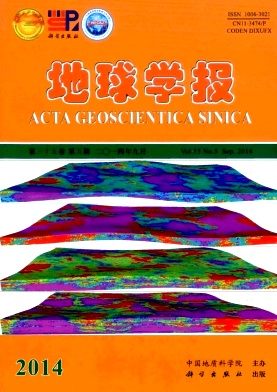CUI Jian-jun, DONG Shu-wen, MALi-cheng, SHI Wei. 135~130 Ma:The Timing of Slab Breakoff again in the Dabie Mountains?[J]. Acta Geoscientica Sinica, 2014, (5): 552-559. doi: 10.3975/cagsb.2014.05.04
| Citation: |
CUI Jian-jun, DONG Shu-wen, MALi-cheng, SHI Wei. 135~130 Ma:The Timing of Slab Breakoff again in the Dabie Mountains?[J]. Acta Geoscientica Sinica, 2014, (5): 552-559. doi: 10.3975/cagsb.2014.05.04
|
135~130 Ma:The Timing of Slab Breakoff again in the Dabie Mountains?
-
Abstract
The Dabie complex is mainly composed of Early Cretaceous intrusive rocks and Triassic metamorphic rocks. On the four sides of the complex, there are four regional shearing belts: the Tancheng-Lujiang Fault, the Shangcheng-Macheng Fault, the Xiangfan-Guangji Fault and the Xiaotian-Mozitan Fault. Among them, the strike-slip directions of the Xiangfan-Guangji Fault and Xiaotian-Mozitan Fault were opposite in Early Cretaceous. The northern boundary (Xiaotian-Mozitan Fault) is a sinistral ductile shear zone, and the southern boundary (Xiangfan-Guangji Fault) is a dextral ductile one. In the inner part of the Dabie complex, low-angle mylonitic foliations, which were formed in Early Cretaceous, mostly dip toward SE or NW. Lineations on these later foliations also plunge toward SE or NW. Generally, the Dabie complex is characterized by southeastward extrusion and top-to-NW shearing along the orogen. These structures indicate that Late Mesozoic tectonic processes were very important for the later evolution of the complex. The deformation characteristics in the shear zone and the inner part of the Dabie complex suggest a low-angle exhumation along the orogen (SE-NW), which led to the exhumation of the HP/UHP metamorphic rocks and the synkinematic magmatic rocks to the Earth’s surface. Meanwhile, geochronological data indicate that, during Late Jurrassic-Early Cretaceous, the Dabie complex (or the northeastern margin of the Yangtze plate) underwent large-scale migmatization in 145~135 Ma, synkinematic magmatism in 145~135 Ma, and post-orogenic magmatism in 135~120 Ma. Therefore, Early Cretaceous exhumation recorded in the Triassic metamorphic rocks from the Dabie complex is not the continuation of the Endosinian event, but associated with the Yanshanian intraland orogeny and the subsequent extension. Though the starting time of the orogeny remains unclear, the available dating results for the undeformed plutons (130~120 Ma) and the new zircon U-Pb age of the synkinematic pegmatite dyke obtained by the authors provide better timing constraints on the end of the crustal deformation in Early Cretaceous along the Dabie orogen. In conclusion, the Dabie complex underwent Triassic collisional orogeny-extension, and Late Jurrassic-Early Cretaceous interland orogeny-extension two processes.
-

-
-
Access History







 DownLoad:
DownLoad: